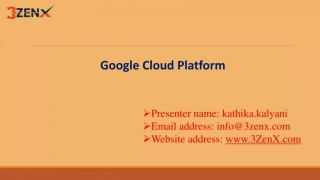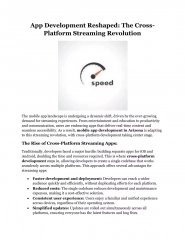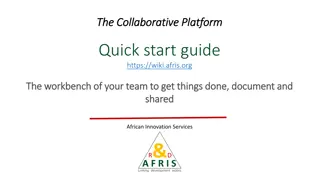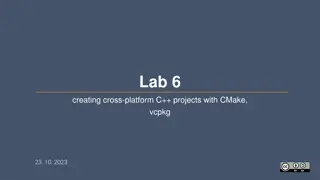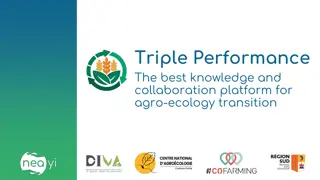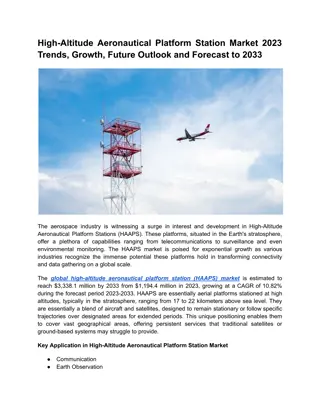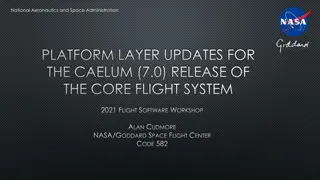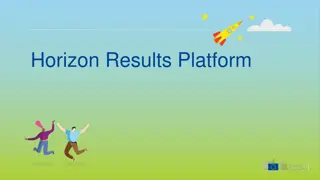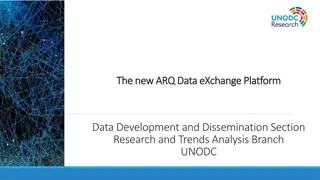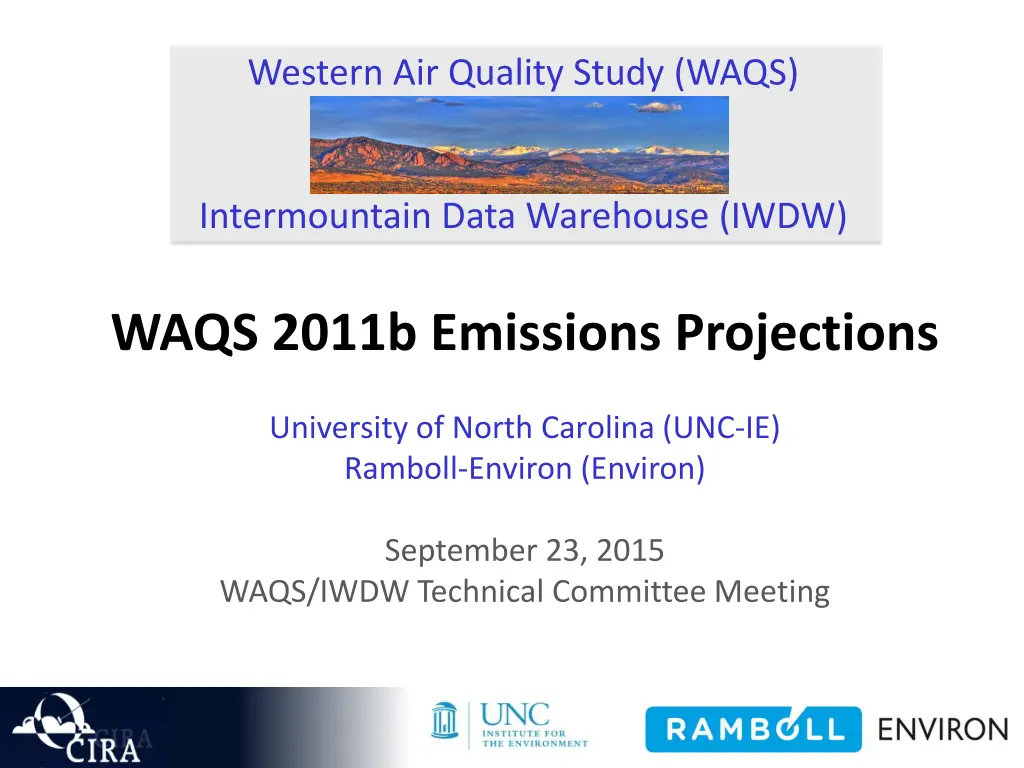
Understanding Emissions Projections for Air Quality Planning
Explore the importance of emissions inventories, projections of future emissions, and conventions in air quality planning to ensure compliance with health standards and reduce exposure to pollutants.
Download Presentation

Please find below an Image/Link to download the presentation.
The content on the website is provided AS IS for your information and personal use only. It may not be sold, licensed, or shared on other websites without obtaining consent from the author. If you encounter any issues during the download, it is possible that the publisher has removed the file from their server.
You are allowed to download the files provided on this website for personal or commercial use, subject to the condition that they are used lawfully. All files are the property of their respective owners.
The content on the website is provided AS IS for your information and personal use only. It may not be sold, licensed, or shared on other websites without obtaining consent from the author.
E N D
Presentation Transcript
Western Air Quality Study (WAQS) Intermountain Data Warehouse (IWDW) WAQS 2011b Emissions Projections University of North Carolina (UNC-IE) Ramboll-Environ (Environ) September 23, 2015 WAQS/IWDW Technical Committee Meeting
Summary Emissions Processing Categories Options from EPA 2011v2 Platform WAQS Categories Recommendations for 2011b Projections 2
Emissions Inventories Emissions are what is regulated, not ambient air quality - through: Limits on permitted sources and tracking of actual emissions Strategies that address group or types of sources by specifying technology for operations (fuels, turnover of technology) or controls (specified emissions limits) Fees for permitted sources allow regulators to recover costs to issue, inspect, and monitor impacts Reporting and analysis of inventory data allows trend and compliance tracking A heightened effort is required to build and understand a baseline historical period inventory for a modeling study Modeling studies also require projections of future emissions to assess control programs to efficient emissions reduction strategies 3
Projections of Future Emissions Background Need Air quality planning to correct violations of health and welfare standards To prevent violations of standards and to reduce exposure Account for state and federal regulations on the books and on the way Effectively consider known future to estimate additional costs and benefits of additional control options Scope Change across all source categories from baseline actual emissions into the future Anthropogenic sources affected by Economic factors Changes in technology Emerging standards 4
Emissions Projection Conventions Base Year Future Year Projections = growth + controls Do not decouple a base and future year inventory pair Natural emissions categories are held constant Anthropogenic emissions categories may be projected Typically no changes to spatial allocation, temporal patterns, or speciation 5
Available Projection Inventories for Base11b Platform Non-O&G EPA 2011NEIv2 Platform 2017 and 2025 projection years 2017 available now, includes documentation; part of recent NODA 2025 to be released in October, with documentation Same categories as 2011 base (including O&G) O&G 2020 projections off of 2011 Phase 2 6
WRAP Phase III O&G EI Methodology Diagram Unpermitted sources surveys to O&G producers Permit data from State databases and EPA permit data (Title V) or other permit data Combined survey responses for all participating companies IHS database (oil and gas production and well and spud counts) Scaled-up unpermitted sources emissions for entire basin Complete oil and gas emissions inventory for entire basin 7
WRAP Phase III Source Categories Large Point Sources Lateral compressor engines Workover Rigs (Gas plants, compressor stations) Salt-Water Disposal Engines Drill Rigs Artificial Lift Engines (Pumpjacks) Wellhead Compressor Engines Vapor Recovery Units (VRU s) CBM Pump Engines Miscellaneous or Exempt Engines Heaters Flaring Pneumatic Devices Fugitive Emissions Condensate and Oil Tanks Well Blowdowns Dehydrators Truck Loading Completion Venting Amine Units (acid gas removal) Fracing Engines Water Tanks
Intermountain West - Gas Production and Prices 7,000,000 $9.00 Intermountain West Gas Production Wellhead Gas Prices $8.00 6,000,000 Gas Production (million cubic feet) $7.00 5,000,000 Gas Prices ($/MCF) $6.00 4,000,000 $5.00 3,000,000 $4.00 2,000,000 $3.00 1,000,000 $2.00 0 $1.00
O&G Projections - Methodology No standardized methodology for conducting projections each inventory study has used different approaches (RMPs, NEPA projects, regional inventories) WRAP Phase III inventories use a three-step approach: 1. Activity scaling factors 2. Uncontrolled projections 3. State and federal regulatory control requirements Activity scaling requires input from operators on planned activities and/or analyzes trends and/or relies on industry studies State and federal regulatory control requirements complex 10
Projections - Methodology Operators queried for planned drilling activities Well decline data gathered to generate basin-average curves Production projections constructed from operator data/historic trends 11
NOx Projections - Results 50,000 45,000 40,000 NOx Emissions (tons per year) 35,000 30,000 25,000 20,000 15,000 10,000 5,000 0 Baseline Baseline Baseline Baseline Baseline Baseline Baseline Baseline Baseline Projection Projection Projection Projection Projection Projection Projection Projection Projection DJ Piceance Uinta North San Juan South San Juan Wind River Powder River South West Williston Wyoming Emissions projections are complex mix of growth or decline factors and controls from natural equipment turnover and state/federal regulations 12
VOC Projections - Results 500,000 450,000 400,000 350,000 VOC Emissions (tons/year) 300,000 250,000 200,000 150,000 100,000 50,000 0 Baseline Baseline Baseline Baseline Baseline Baseline Baseline Baseline Baseline Projection Projection Projection Projection Projection Projection Projection Projection Projection DJ Piceance Uinta North San Juan South San Juan Wind River Powder River South West Williston Wyoming State regulations vary widely from state to state in emission source categories regulated and levels of control required 13
Emission Inventories Issues and New Concepts 1. Point vs. area sources 2. Missing source categories 3. Skewness 4. Gas composition data 5. New factor data 6. Uncertainties 14
Issues and New Concepts Point vs. Area Point vs. Area Sources Pros Cons Better spatial resolution Gather actual emissions/actual usage Improved accuracy of emissions Resource intensive (to states and industry) Resource intensive to process Factor approach still used for minor sources Expect improvement in spatial resolution and accuracy of emissions data from point sources but significant effort to process and track Colorado (APENs) and Wyoming (site surveys) already doing this 15
Issues and New Concepts Missing Categories Produced water (evaporation) ponds Emission factors uncertain and highly dependent on composition, production type Seasonal/diurnal variations See for example Utah State University work to characterize emissions in Uinta Basin 16
Issues and New Concepts Missing Categories Field gathering pipelines Lack of data on extent of pipeline infrastructure within fields Pipeline companies historically not part of the inventory process 17
Issues and New Concepts Missing Categories Midstream sources Midstream sources not always captured in inventories state reporting thresholds Midstream sources on tribal lands Midstream companies historically not part of the inventory process 18
Issues and New Concepts Missing Categories Mobile sources Trucking and off- road equipment likely underestimated in existing mobile inventories Activities dispersed throughout basins and among basins See for example P3 study in Piceance Basin All Counties -All Activities 100% 90% 80% 70% 60% 50% Oil and Gas 2009 40% Mobile Sources 30% 20% 10% 0% NOX CO VOC PM10 As operators and regulators move to other systems to produce and move products and by- products (train, pipelines and electrification) and away from trucks and diesel/field gas combustion, new data is needed 19
Issues and New Concepts Missing Categories Non-routine events Pipeline blowdowns Spills/upsets Maintenance activities 20
Issues and New Concepts Skewness Poorly performing and non- average sources could have significantly higher emissions than estimated in inventories Analogous to smoking vehicles in mobile source inventories Statistical sampling/monitoring of sources needed to develop methods to represent this in inventories See for example NOAA monitoring in Uinta Basin and CDPHE capture efficiency adjustments 21
Issues and New Concepts Gas Compositions Gas compositions in Phase III use a basin-average approach Ethane Propane Methane n-Butane Others CO2 i-Butane Hexanes i-Pentane n-Pentane Nitrogen C8+ Toluene Variability within a basin by production type (field to field) Benzene Helium Xylenes Other Conventional Gas (Vented/Fugitive Sources) Variability within the production/gathering system CO2 Methane N2 Others Methane C1 Ethane C2 Propane C3 i-Butane i-C4 n-Butane n-C4 i-Pentane iC5 n-Pentane nC5 n-Hexane n-C6 Hexanes C6 Heptanes C7 C8+ Heavies More data needed field or formation level approach for basins? Benzene Toluene e-Benzene Flash Gas (Condensate and Oil Tanks) 22
Issues and New Concepts Factors and Uncertainty New factor data Fugitive emissions Venting from well completions Water tanks / evap ponds Applying EDF studies results in specific Basins More complete/representative speciation data across various processes Uncertainty Uncertainties not quantitatively estimated in most inventories Large data sets needed to estimate uncertainty Helpful in identifying poorly-characterized sources, and estimating uncertainty in AQ modeling 23


